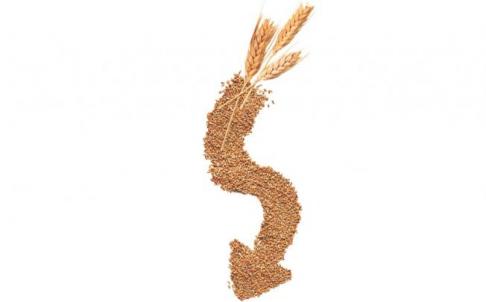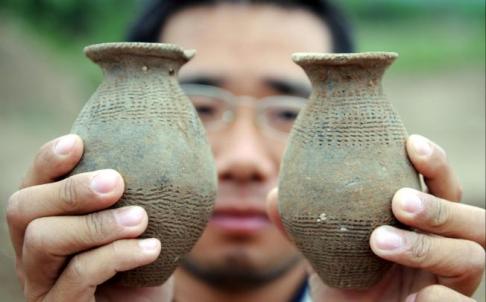Wheat and millet dug up by archaeologists in Yunnan hint at previously unknown migrations and may shed light on a mysterious civilisation.
Pottery and grains traditionally found in northern China were recently unearthed in the southwestern province of Yunnan, renewing a long-standing debate about how Chinese civilisation evolved in the region and offering clues about an ancient migration route.
Beijing and Kunming researchers found charred remains of wheat and millet nearly 4,000 years old in Yunnan. The crops are typically cultivated in the Yellow River drainage basin, but not further south. The finding suggests the early settlers in Yunnan cultivated the crop far earlier than previously thought.
"Nobody expected wheat or millet this old from Yunnan," said Peking University researcher Jin Hetian after presenting the findings at an archaeology conference in Fukuoka, Japan, in June.
The findings have not been published in any journals, pending further data analysis. But they could shed new light on Yunnan's Dian people, who are credited with creating one of the four distinct Bronze Age civilisations, a society one researcher described as "almost as mysterious as the Mayans".

More than 1,000 grains of wheat were identified in dirt samples taken from the Haimenkou excavation site in northwest Yunnan, and carbon-dating tests showed the wheat samples were from 1,600BC to 400BC. A few hundred charred millet grains were also found, some dating back to a much earlier era.
Scientists hope that the archaeobotany study - examining plant remains from archaeological sites to understand a certain society's lifestyle and economy - may confirm a long-held, but unproven, theory that millet entered the Indochina peninsula through what is now Yunnan.
The Haimenkou site also offers clues about an ancient migration route across China. Pottery and bronze artefacts unearthed there are strikingly similar to those in the Qijia culture (2400-1900BC) that existed from the Neolithic to the Bronze Age in the north in present-day Gansu province.
The new evidence suggests a connection between the southern and northern regions, which are some 1,500 kilometres apart, the study says.
"Painted pottery and jars with single or double handles are similar to those typical of the Qijia culture," Jin said as she read the findings at the Fifth World Conference of the Society for East Asian Archaeology.
Jin speculates that some northerners such as the Qijia people, who grew crops, and made pottery and bronze, could have migrated south in search of warmer climes. "This most likely has to do with climate changes some 5,000 years ago," she said. "Temperature dips in northwest China around 3,000BC may have driven the local inhabitants to warmer places."
One possible scenario is that early migrants completed a daunting journey to Yunnan that spanned hundreds of years, on a trail that covered mountain ranges and waterways, according to Jin. She theorises that the Qijia people followed this trail, which eventually led to Haimenkou.
The earliest wheat grains found at the excavation site date to 200 years after the Qijia culture died out in Gansu, suggesting that it took many generations before these prehistoric refugees reached their destination.
However, some researchers cast doubts on the theory.
Zhao Jianlong, of the Gansu Province Institute of Archaeology in Lanzhou, called the idea of a mass migration through the southwest's forbidding terrain implausible.
"Can you imagine these sedentary crop growers - not nomads - traversing hundreds, even thousands of kilometres? I just don't see it," said Zhao, who was not part of the study.

Zhao is leading a group of archaeologists in Gansu in a project to save valuable artefacts from excavation sites in Yongjing county that are in the way of a high-speed rail line being built to link Lanzhou and Urumqi. Pottery fragments attributed to the Qijia have been found at these sites.
Early human migration may have been more common and frequent than Zhao is prepared to believe. Artefacts and plant remains found in valleys leading all the way to Yunnan mark a possible route for some of these movements.
"The eastern edge of the Tibetan Plateau was buzzing with traffic in the Neolithic [period] to the Bronze Age," said Professor Zhao Zhijun, director of archaeobotanical studies at the Chinese Academy of Social Sciences, who was also not involved in the Peking University study.





Why not rent a boyfriend, or girlfriend to please parents during the Spring Festival?